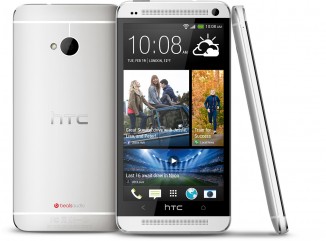 As expected, HTC launched its long-awaited 2013 flagship in the HTC One in dual events held simultaneously in New York and London.
As expected, HTC launched its long-awaited 2013 flagship in the HTC One in dual events held simultaneously in New York and London.
After a year which saw it register loss after loss owing to the HTC One series performing well below expectations for the one-time leader in Android smartphones, HTC had to deliver big on the next iteration of the HTC One and it did just that.
To start with, gone is the HTC One as a series of tiered smartphones to serve every part of the market, from low-end to flagship. HTC One is now clearly a single high-end model with flagship aspirations, owing to its milled aluminum body and finish. The phone features a 4.7-inch 1080p display at 468ppi, as pixel density is now the new barometer for display quality these days, however overstated it may be in reality.
However, the real star of the dual events event was the “Ultrapixel” camera, a camera unit with oversized sensor pixels for better quality and low-light performance. The camera is 4.0 megapixels total, trading total pixel count and the increase in pixel quantity for pixel size and recalling the days of early DSLR technology. The camera also sports optical image stabilization, an f/2.0 lens element as found in the previous One series, and the ability to capture real-time HDR video. As explained by HTC in the liveblog earlier this morning, the One can capture a hybrid photo+video collage that HTC calls a “Zoe”, which includes a burst of full-resolution photos plus a three-second HD video clip with audio.
The One also sports Android 4.1 Jelly Bean and Sense 5. Sense 5 includes a new Flipboard-like home screen called the “BlinkFeed”, that merges Facebook, Twitter, and news content in a stream of visual tiles which behaves much like the Flipboard news aggregation app or Microsoft’s Live Tiles. The One also includes an infrared transceiver and includes universal remote control software in a departure from past devices, suggesting that HTC wants the new One series to be a perpetual companion instead of just a communication device.
Hardware includes a 1.7 GHz Qualcomm Snapdragon 600 quad-core processor, 2 GB of RAM, up to 64 GB of embedded memory depending on model selected, NFC support, a 2300mAh battery, and front-facing stereo speakers with machined and drilled apertures for improved volume. The audio features also include a built-in high-power amp and an extra microphone for clearly capturing sound in unusually loud environments, such as concerts and aping Nokia’s audio technology found in the 808 PureView for capturing audio for video capture at up to ~120dB without distortion.
The One will be available starting in March, from AT&T, Sprint, and T-Mobile in 16GB and 32GB configurations, but neither carrier will carry the 64GB version, relegating it to outright purchases for only the most dedicated enthusiasts, as the phone does not feature a microSD slot. Verizon Wireless was also absent from mention during this morning’s events and was not mentioned in the press releases for the new One flagship, a surprising absence, given the carrier’s current market size.
Pricing for each carrier’s variant of the One flagship is expected to be confirmed throughout the day, with T-Mobile’s pricing of particular interest to the wider industry, as it has officially abandoned conventional subsidies in favor of an upfront financing model since the beginning of the calendar year.